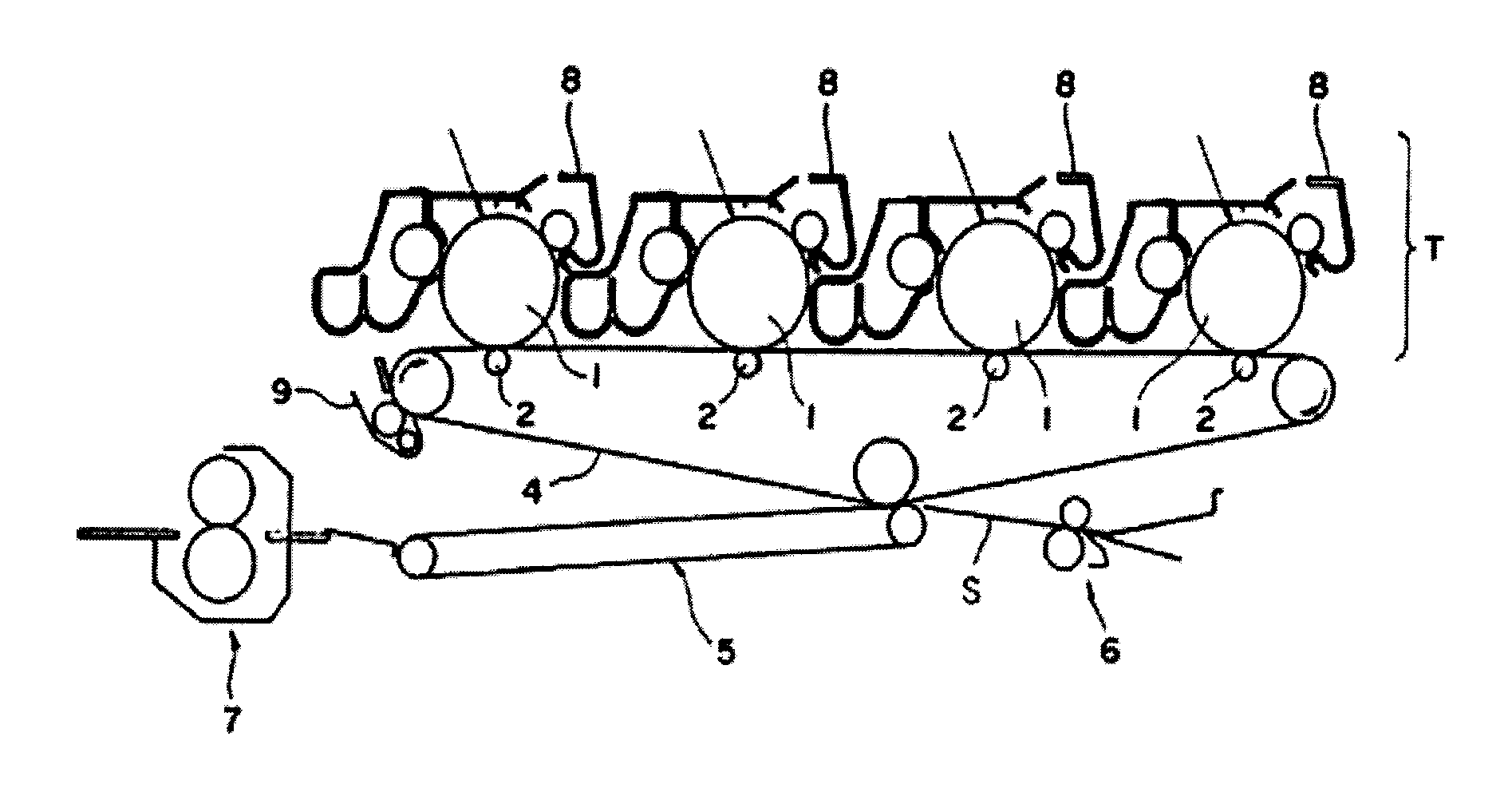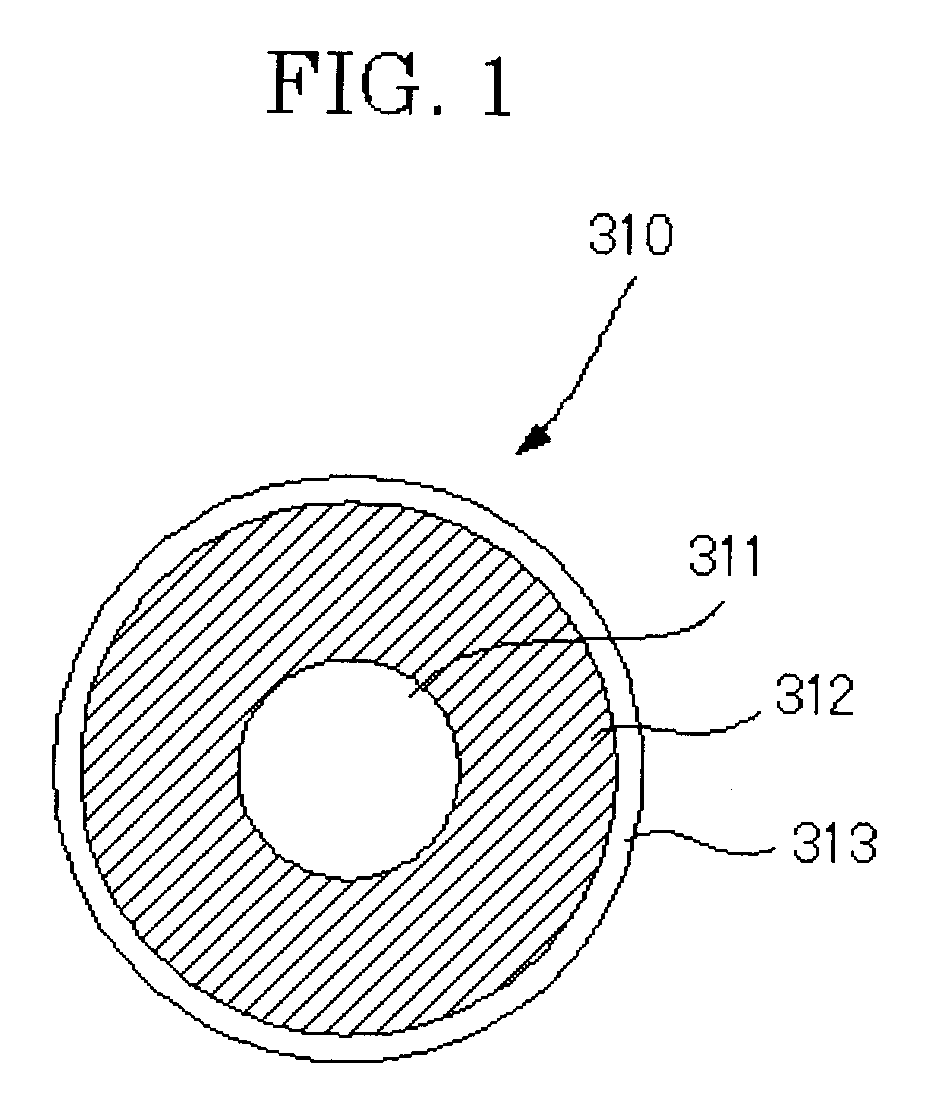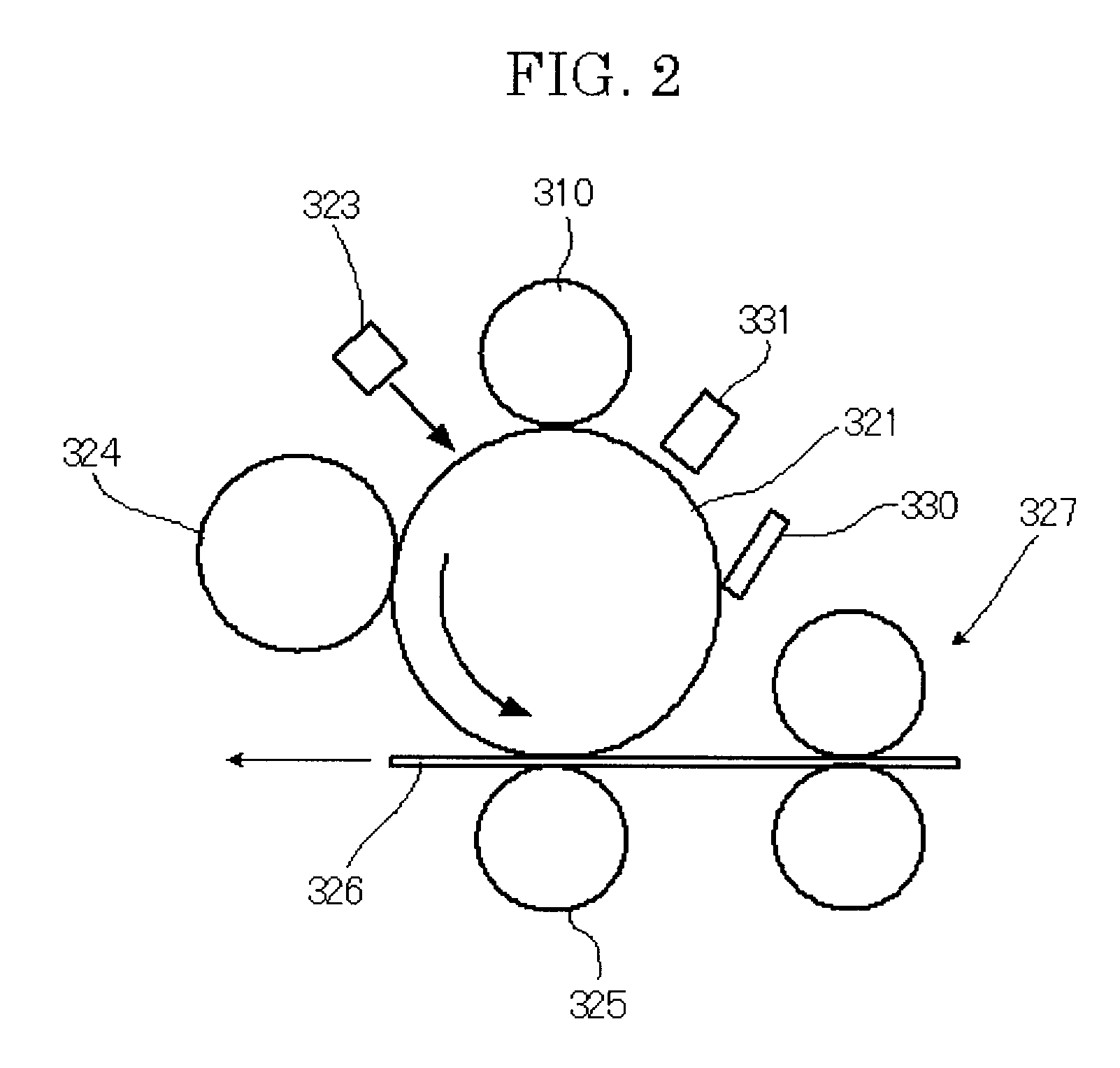Image forming apparatus, image forming method, and process cartridge
a technology of image forming apparatus and process cartridge, which is applied in the direction of electrographic process, electrographic process using charge pattern, instruments, etc., can solve the problems of low thermal conductivity, deformation of thermal responsiveness, and disadvantageous increase of tandem image forming apparatus, and achieves excellent low-temperature fixing property, anti-offset property, and storage stability. stability and stability
- Summary
- Abstract
- Description
- Claims
- Application Information
AI Technical Summary
Benefits of technology
Problems solved by technology
Method used
Image
Examples
synthesis example 1
—Purification of Rosin—
[0474]To a 2,000 ml volumetric distilling flask equipped with a distilling tube, a reflux condenser, and a receiver, 1,000 g of a tall rosin was added and distilled under a reduced pressure of 1 kPa to collect a distillate at 195° C. to 250° C. as a fraction. Hereinafter, a tall rosin subjected to purification is referred to as an unpurified rosin, and a rosin collected as the distillate is referred to as a purified rosin.
[0475]First, 20 g of each rosin was pulverized by a coffee mill (National MK-61M) for 5 seconds and sieved by a screen having an opening size of 1 mm. The rosin powder 0.5 g was added in a vial for head space (20 ml). After sampling a head space gas, impurities in an unpurified rosin and a purified rosin were analyzed in the following manner by head space GC-MS. The results are shown in Table 1.
A. Head Space Sampler (HP7694 manufactured by Agilent Co.)
[0476]Sample Temperature: 200° C.
[0477]Loop Temperature: 200° C.
[0478]Transfer Line Temperat...
synthesis example 2
—Synthesis of Acrylic Acid-Modified Rosin A—
[0501]To a 10 L volumetric flask equipped with a distilling tube, a reflux condenser, and a receiver, 6,084 g (18 mol) of a purified rosin (SP value: 76.8° C.) and 907.9 g (12.6 mol) of acrylic acid were added. After heating from 160° C. to 220° C. for 8 hours, the reaction was performed at 220° C. for 2 hours. Distillation was performed under a reduced pressure of 5.3 kPa at 220° C. to obtain an acrylic acid-modified rosin A. The SP value, glass transition temperature, and modification degree of the obtained acrylic acid-modified rosin A were 110.4° C., 57.1° C., and 100, respectively.
synthesis example 3
—Synthesis of Acrylic Acid-Modified Rosin B—
[0502]To a 10 L volumetric flask equipped with a distilling tube, a reflux condenser, and a receiver, 6,084 g (18 mol) of a purified rosin (SP value: 76.8° C.) and 648.5 g (9.0 mol) of acrylic acid were added. After heating from 160° C. to 220° C. for 8 hours, the reaction was performed at 220° C. for 2 hours. Distillation was performed under a reduced pressure of 5.3 kPa at 220° C. to obtain an acrylic acid-modified rosin B. The SP value, glass transition temperature, and modification degree of the obtained acrylic acid-modified rosin B were 99.1° C., 53.2° C., and 66, respectively.
[0503]An alcohol component, a carboxylic acid component except trimellitic anhydride, and an esterifying catalyst, which are shown in Tables 2 and 3, were added to a 5 liter volumetric four-necked flask equipped with a nitrogen introducing tube, a dewatering tube, a stirrer, and a thermocouple. Polycondensation was performed under a nitrogen atmosphere at 230° ...
PUM
| Property | Measurement | Unit |
|---|---|---|
| molar ratio | aaaaa | aaaaa |
| molar ratio | aaaaa | aaaaa |
| volume resistivity | aaaaa | aaaaa |
Abstract
Description
Claims
Application Information
 Login to View More
Login to View More - R&D
- Intellectual Property
- Life Sciences
- Materials
- Tech Scout
- Unparalleled Data Quality
- Higher Quality Content
- 60% Fewer Hallucinations
Browse by: Latest US Patents, China's latest patents, Technical Efficacy Thesaurus, Application Domain, Technology Topic, Popular Technical Reports.
© 2025 PatSnap. All rights reserved.Legal|Privacy policy|Modern Slavery Act Transparency Statement|Sitemap|About US| Contact US: help@patsnap.com



